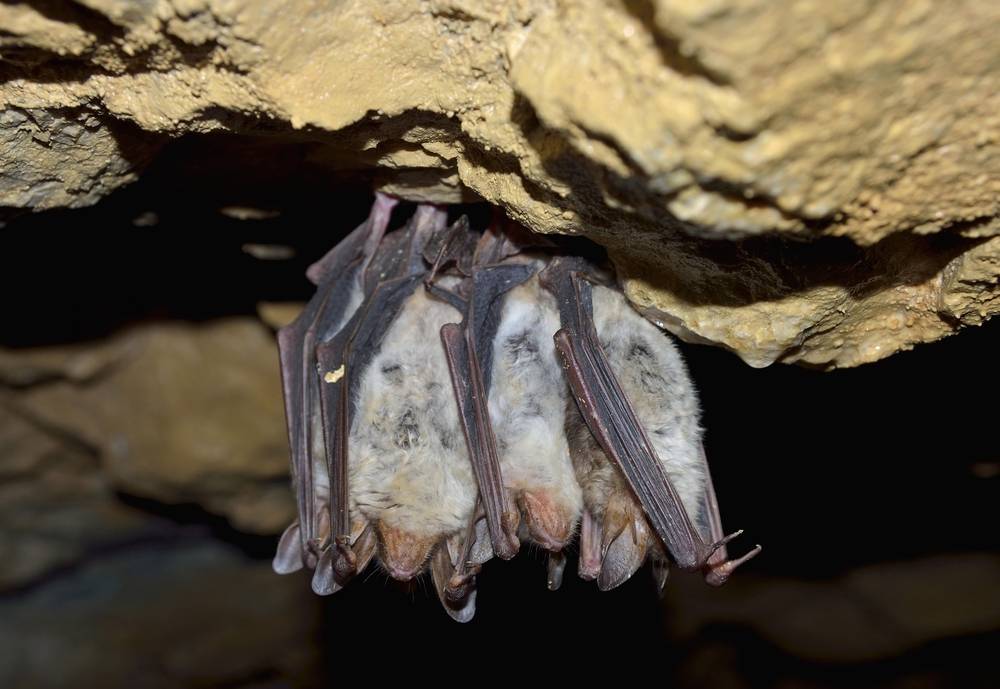Bats of Kentucky

Black flying-foxes (Pteropus alecto) hanging in a tree, Kakadu National Park, Northern territory, Australia
About 14 years ago, a fungus was discovered that affects bat populations. The fungus is now known as white nose syndrome and it has spread across much of the United States. At Mammoth Cave Park in Kentucky, the illness is looked at as the cause for the loss of around 75-80 percent of bat populations there. At one point, Tri-colored bats were the most often seen bat species in the cave.
Bats often live in colonies, frequenting a cave, loose bark, or even tree leaves. They roost upside down, holding on with their hind feet, and nuzzling into their wings. All North American bats are nocturnal, foraging at night, but in other parts of the world there are number of diurnal species, which feed during the day.
For more information on bats, visit Wildlife Removal Pros.
Fungus Blamed For Loss Of 75-80 Percent Of Bats At Mammoth Cave
It’s been nearly 14 years since “white-nose syndrome,” named for a white powder-looking fungus found on the nose of bats, was first identified on a bat in New York. Since then the disease has moved westward, leaving millions of dead bats in its wake. At Mammoth Cave National Park in Kentucky, the disease is blamed for the loss of 75-80 percent of Tri-colored bats there.
National Park Service staff at the park say Tri-colored bats were once among the most often seen bat species in the cave. Learn more
Summary: About 14 years ago, a fungus was discovered that affects bat populations. The fungus is now known as white nose syndrome and it has spread across much of the United States.
Four Rivers Wildlife: Batting for a Cure
Bats are amazing animals, but people like to conjure up all kinds of horror stories about them, most of which are nonsense. Bats have a hold on our imaginations like few other species, even though we have nothing to fear. In fact, we should be thankful for bats, particularly when we buy groceries.
There are over 1,300 species of bats worldwide, 16 of which live in Kentucky. Read more
Summary: There are around 1,300 species of bats throughout the world. 16 are native to Kentucky and dwell in many places, including Mammoth Cave.
This Northern Long-Eared Bat was the 1st bat discovered at Mammoth Cave with White-Nose Syndrome. Once the most common bat found in the park, it’s now among our rarest & on the Threatened Species List. In under 6 short years, its park numbers are down >99%. #BatWeek #SaveTheBats pic.twitter.com/zPZfJc2Lnf
— Mammoth Cave NP (@MammothCaveNP) October 29, 2018

